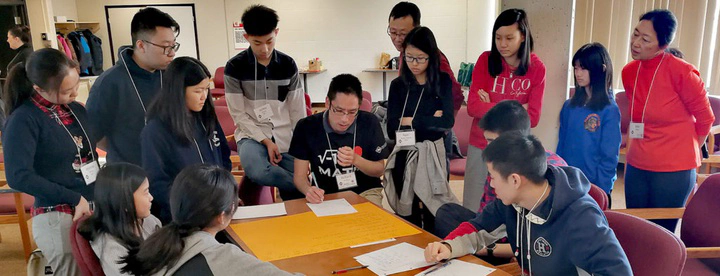Math for the real world

The ability to apply mathematical and computational thinking to real-world problems will be critical for Canadian students entering the workforce. This kind of critical thinking is becoming foundational to most science, technology, engineering and mathematics-related (STEM) careers.
But for most parents and teachers, the question is: How do we entice kids into learning the applied mathematics and coding skills that they will need for the future digital economy?
How Callysto and the Math for Real Program teamed up to make this happen
“How many of you know how to solve everyday math problems — like helping your parents find the cheapest gas, or figuring out who in your class was born on a Saturday?” asked Hongmei Zhu to a group of teenagers.
It was a cold Monday morning in mid-March, and 15 students in grades 8-12 from the greater Toronto area had gathered for a three-day ‘Math for Real’
camp at York University. Zhu, a math professor from York University and co-organizer of the Math For Real program, was one of four instructors working with students to build their math confidence.
The goal of the “Math for Real” program is simple: build math capabilities in Canadian students by linking their classroom knowledge in mathematics and computer science to everyday situations. (It also grooms them to participate in the International Mathematical Modelling Challenge competition).
Sparking students’ curiosity to help them think big
This year, the Callysto team was invited to participate in the math camp.
“Callysto was a natural fit for us when we were thinking about how to showcase the real-world applications of computational thinking and coding to students,” says Zhu.
Over the three-day camp at York University, our Callysto team worked closely with students to demonstrate the real-life applications of Juypter notebooks. They also showed how computational thinking and math modelling is being used to solve the world’s most important problems, such as climate change predictions, or scheduling airplane departure schedules.
On day one our lead instructor, Richard Hoshino, introduced students to the concepts of math modelling, computational thinking and coding in Python using a Jupyter notebook. Very quickly, it became clear that Callysto had captivated their attention.
As the students huddled around their laptops, you could see their attitudes toward applied mathematics and programming slowly shifting.
There were even moments of delight and awe when we showed them how to use create a Python algorithm in Callysto to source cheaper gas.
During the second day, one student shared with our team: “My parents couldn’t believe that I was using Python to code. I showed them that I could program in Callysto and they were so proud of me.”
By the end of the camp, the students had a better understanding of applied math and programming, and its importance for their future.
“I really enjoyed the camp,” said a Grade 9 student from Markham. “[It] sparked my interest in Callysto, Maple and Python, and I’m more inclined than ever before to learn about math modelling on my own.”
Inspiring the next generation of Canada’s digital leaders
These 15 students were among hundreds of teachers and youth who across Canada who were introduced to the Callysto initiative. By bringing practical technology applications into the classroom, we hope to continue to inspire Canadians to grow and compete in the digital economy. We look forward to the next phase of this program!